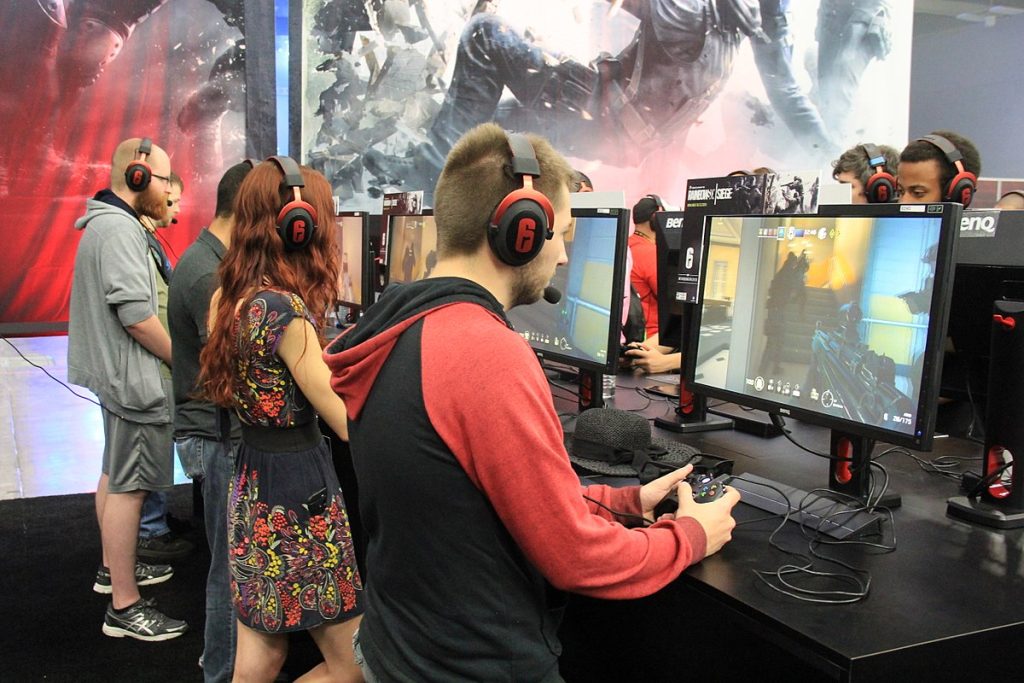
Introduction
Over the years, Gaming Laptops have undergone a remarkable transformation. What began as heavy, loud, and power-hungry machines has evolved into sleek, efficient, and incredibly powerful systems. Today’s Gaming laptops rival high-end desktops, offering exceptional performance in ultra-portable designs. Let’s take a look at how Gaming Laptops evolved from bulky beginnings to the powerhouse beasts we know today.
The Early Era: Power Over Portability
In the early 2000s, Gaming Laptops were more about proving a concept than delivering true mobility. Brands like Alienware and Toshiba created massive devices that weighed over 10 pounds and featured large power adapters. These early models relied on desktop-grade components, which produced immense heat and drained batteries quickly. While they offered impressive power for their time, portability and practicality were clear trade-offs.
Mid-2000s: The Rise of Dedicated GPUs
As technology advanced, Gaming Laptops started featuring dedicated GPUs like NVIDIA’s GeForce 7000 series and AMD’s Radeon Mobility chips. This was a major turning point. For the first time, gamers could experience real 3D performance without needing a desktop. However, these laptops were still thick and prone to overheating, often requiring cooling pads to stay functional during extended sessions.
Late 2010s: Slimmer Designs, Stronger Performance
By the late 2010s, Gaming Laptops started to break away from their bulky image. Intel’s mobile CPUs and NVIDIA’s Max-Q technology allowed powerful hardware to fit into thinner, quieter designs. This era marked the birth of high-performance laptops like the Razer Blade and ASUS ROG Zephyrus — machines that were both stylish and powerful. Cooling systems improved dramatically, and RGB lighting became a defining feature for gaming aesthetics.
The Razer Revolution
Razer Gaming Laptops played a major role in redefining expectations. When the first Razer Blade launched, it shocked the industry with its slim profile and premium build. Razer proved that Gaming Laptops could be both elegant and powerful. With features like vapor chamber cooling, precision-machined aluminum bodies, and ultra-fast displays, Razer set the standard for what modern gaming on the go should look like.
2020–2023: The Era of Portability and Power
During this period, Gaming Laptops became more efficient, lightweight, and performance-driven than ever before. NVIDIA’s RTX 30 and 40 series GPUs introduced real-time ray tracing and AI-enhanced gaming to laptops, while AMD and Intel competed fiercely to deliver faster processors with lower power consumption. Gamers could now enjoy 144Hz and even 300Hz displays on portable machines — something unimaginable a decade earlier.
2024–2025: Beast Mode Unlocked
Fast forward to 2025, and Gaming Laptops have reached what many call “beast mode.” Devices like the Razer Blade 18, ASUS ROG Strix Scar 17, and MSI Titan GT77 HX deliver desktop-level performance with ultra-efficient cooling systems. They feature up to Intel Core i9 and AMD Ryzen 9 processors, paired with NVIDIA RTX 5090 GPUs. Despite their incredible power, these laptops remain thin, quiet, and surprisingly lightweight. Today’s machines are designed not just for gaming but also for streaming, video editing, and AI-driven content creation.
Cooling: The Key to Evolution
Thermal management has been one of the most crucial advancements in Gaming Laptops. Early models suffered from extreme heat issues, often throttling performance to prevent overheating. Modern laptops now feature advanced vapor chamber cooling, liquid metal thermal compounds, and AI-controlled fan systems. This allows sustained performance even under heavy workloads — a critical feature for professional gamers and creators alike.
Display Technology: From Basic to Brilliant
Displays on Gaming Laptops have also evolved dramatically. Gone are the days of dim, low-refresh screens. Today’s laptops boast QHD and 4K resolutions, OLED panels, and refresh rates up to 360Hz. The combination of high brightness, color accuracy, and ultra-fast response times creates an immersive gaming experience previously only possible on desktop monitors.
Battery and Portability Improvements
Another major leap for Gaming Laptops is battery efficiency. With smarter power management and more efficient hardware, modern devices can last up to 8–10 hours in hybrid modes. USB-C charging and lighter power bricks make these machines even more travel-friendly, proving that portability no longer means sacrificing performance.
The Future of Gaming Laptops
Looking ahead, Gaming Laptops are set to integrate even more advanced features. AI-assisted performance tuning, foldable displays, and modular components are already in development. Razer and other leading brands continue to push innovation, ensuring that the next generation of Gaming Laptops will be faster, smarter, and even more portable.
Conclusion
The journey of Gaming Laptops from bulky bricks to sleek beasts is a story of relentless innovation. Once criticized for being heavy and impractical, they now represent the pinnacle of mobile computing power. As of 2025, brands like Razer continue to lead this evolution — proving that you can have style, portability, and unmatched performance in one machine. The future of Gaming Laptops is here, and it’s more powerful and portable than ever.



